We did it! The Lalibela Circus and Cultural Show Pilot Project worked full time for two months in Lalibela, Ethiopia and performed for the community for two nights in the UNESCO Cultural Center. The goals of the Pilot Project were met on a budget of $9044. We created a show about Ethiopian history, culture, and the contemporary social issue of forced marriage. There were many challenges. Intercultural communication was on a constant learning curve. We had to create a viable rehearsal space, negotiate a performance space, and cast members attended rehearsals at different times of the day.
To produce the show in Lalibela, the US non-profit organization, Wheelbarrow Productions (WHEE) affiliated with Ethiopian NGO, Admas Arts and Development Association. Admas has a compound with a long small room with a concrete floor, benches, chairs and musical equipment they use for their classes in the late afternoons. Also on the compound is their office, a storage room and an outside shed. Admas let us rehearse there during the day for free and agreed to rent us their electronic music equipment for a reasonable rate. Four chairmen were chosen to represent each artistic discipline. These lead men of dance, music, theater and circus met periodically to make decisions about the process of the show. As the director of WHEE, I had a say in this process, but all decisions were made collectively.
We employed 10 circus members, 4 traditional dancers, 3 lead singers and 3 lead actors, but almost every cast member participated in the play created about early (youth) or, forced marriage. The second lead male in the play was also the circus chairman. The lead male singer, music chairman, actor and assistant director of the play also played Kra, a traditional hand-held harp. Other musicians in the traditional Lasta/Lalibela band played traditional Ethiopian drums, a Mesenqo (a one stringed instrument that is bowed), and a Washint (a traditional flute).

A Mesenqo player traditionally improvises lyrics about the audience while playing for crowds. Our Mesenqo player sang about the importance of condoms in the play during a wedding party scene. The Washint player also played solo while the circus created church pyramids and during poignant monologues.

We all worked together in the long small room at first. I led warm up exercises for the voice and body, using icebreakers and theater games that fostered physical skills, creative expression and working together. We practiced how to listen to each other, the nuances of different traditional dances and theatrically improvised cultural scenes. A priest emerged telling the story of early Christianity in Ethiopia and King Lalibela’s churches. Ethiopia, a female character developed to talk about the emergence of the human being spreading over the world in different colors. The Circus created pyramids resembling the famous local rock-hewn churches, but being under a short roof minimized their capacity. Never the less, we started putting together a play, dances and music from different local regions; Tigray, where Aksum’s obelisk lives and where legend has it, the ark of the covenant is housed, and from Gondar, famous for its spectacular castles. Also, plenty of local Lasta/Lalibela dancing and music was celebrated in various forms.
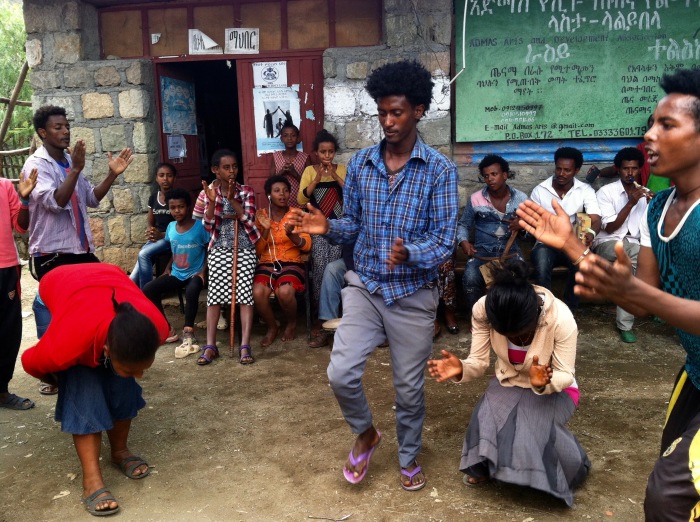
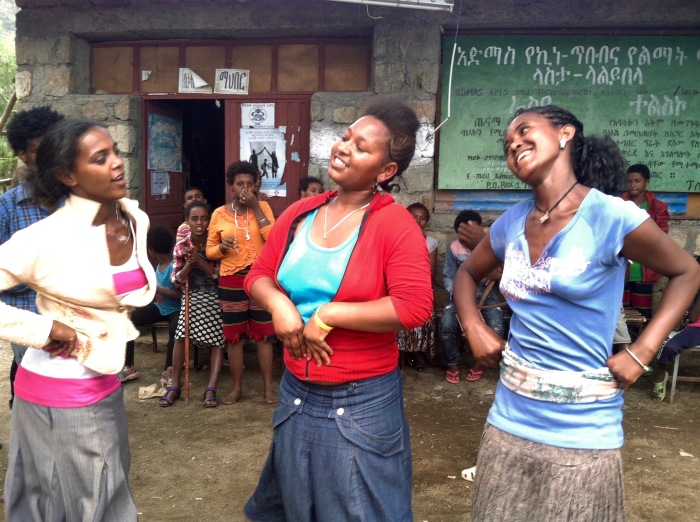
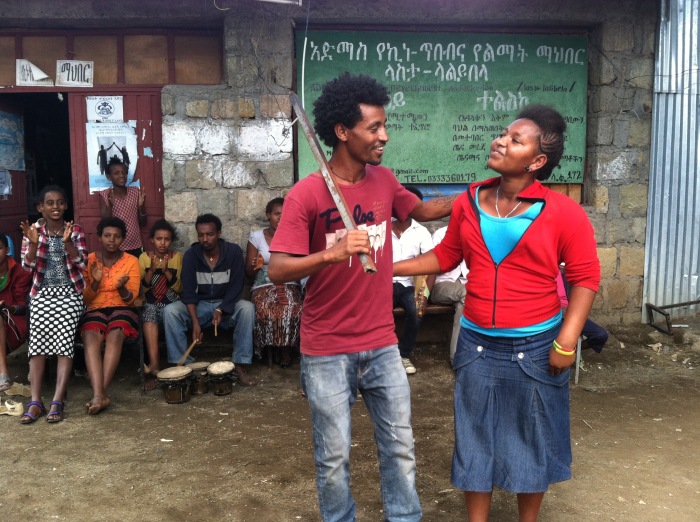
Admas’s mixer broke pretty quickly. It traveled with Admas’s financial officer a full days’ bus- ride away to the city of Dessie for repair. The Music Chairman (also the Chairmen of the Office of Culture and Tourism (OCT), Business Association insisted he needed electrical equipment. After much tiresome haggling, the (OCT) Business Association agreed to rent us their equipment for a much higher fee then Admas did. Those funds were distributed evenly to the members of the OCT Association.
Members of a Business Association in Ethiopia vote for everything the Association does, including how they spend money. I had hoped our funds would go to furnishing a tukul (traditional circular house) they were given to create a traditional music house for sustainable income. This was something they wanted me to support when I was negotiating how to do this project, but a project like that didn’t support the circus as well. The Circus was my first and primary partner in this project. OCT has costumes and musical equipment for the business but they didn’t have a kitchen and the furnishings for the club. There are many tukuls that UNESCO built when they came to Lalibela to protect the churches, but many of them weren’t being used at the time of this project.
My experience in Lalibela, Ethiopia is that their social and business culture is very participatory. After a rehearsal session there would be a discussion, where everyone could share their thoughts about the practice and each others’ work. It was a reflective and thoughtful process when everyone would listen to each other patiently. It was also a time for people to voice complaints or criticize others.Participants would raise their hand to signal their desire to speak and our translator/lead director Mareg Asmro would line them up as a good facilitator does, to make time for everyone’s voice to be heard.
I thought we might have a narrator to translate the spoken Amharic in the show to English for foreign tourists as the project was made to create a show for sustainable income with the idea that incoming tourists would be the primary audience purchasing tickets. I learned though, that having English as part of the performance was not something the chairmen were interested in. In fact, the thought of it was rather insulting. Eventually we may create a written program that translates the content of the show for tourists to read and take home. There was an abundance of interesting content that developed which I wouldn’t want audience members to miss.
We tried hard to get an inside rehearsal space with the height needed for the circus to practice alongside the dancers but that attempt failed terribly. There is one other space other than the UNESCO Cultural Center in Lalibela/Lasta that is fitting for performances. It is the community center which is above the small space the circus presently uses for its classes. It has a high ceiling and chairs that are used for large government meetings. The catch is, Government has the right to take it away from you at any time, even if you have it reserved. And that is what happened to us. We paid to have our new mats, musical instruments and the electronic equipment moved there, but before we started, another group emerged and said they were set to have a meeting also… so we were kicked out.
Lalibela is not the only governing body in this area. Lasta is another governing body. They use the same building for their meetings and unfortunately they don’t coordinate their schedules to avoid double booking. We moved all our equipment back to Admas and figured out how to make it work there for the rest of our rehearsal run.
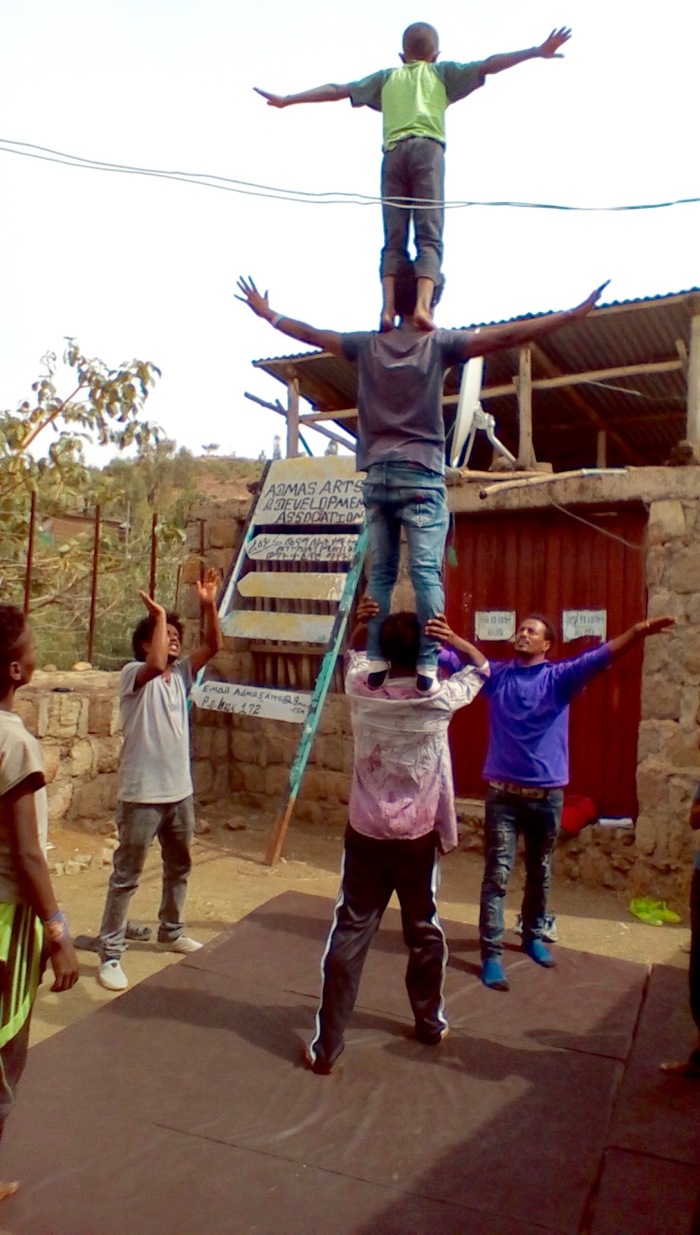
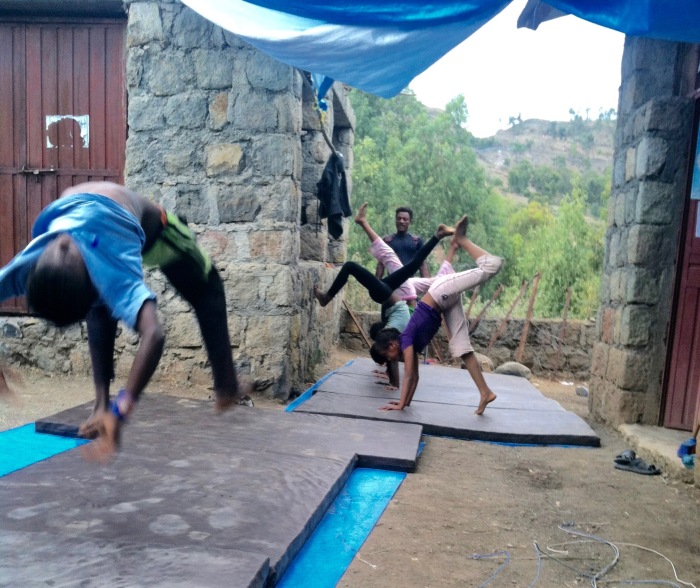
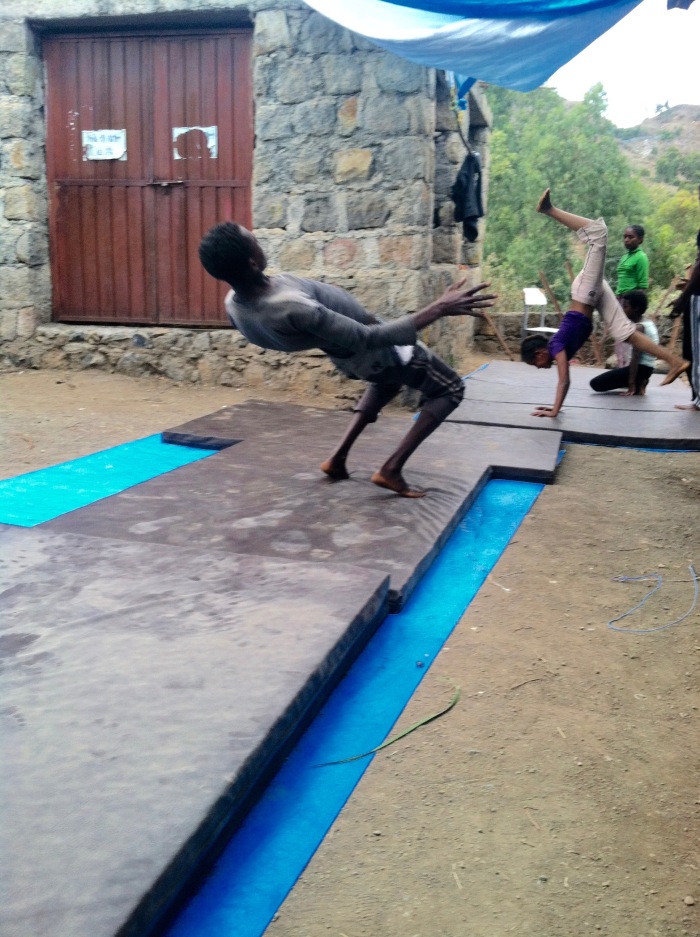
We bought large pieces of plastic to create shade for the circus and set up our mats outside every day. The dancers and musicians practiced inside our small space lit by the door to the outside while the circus could build their pyramids up high.
Our dance chairman got a government job early on but came to practice with us on Saturdays and ended up performing with us. During the week, different students came to practice for half a day, some in the morning, some in the afternoon. Everyone was present on Saturdays. We created two casts for the play so we could always practice. This gave different actors chances to try different roles. In the first week, members were improvising wedding celebrations. On the first Saturday, they surprised me by secretly bringing in a local flat, soft bread soaked in hot pepper sauce so that the feast in the wedding scene could became a real feast. In true Ethiopian tradition, we all fed each other literally.
By the second Saturday we were ready to put together some performance material and practice outside. Soon, it was clear we didn’t really need the electronic music equipment. The music was traditional, and sounded better being played acoustically. Still we had to pay for all the days we agreed to rent the electronic equipment.
Water was also an issue. Everyone wanted to drink it and wash with it. They also wanted tea and bread during break. The first month of rehearsal was the second month of fasting before Ethiopian Easter. Adults don’t eat before noon and don’t eat any food from the flesh at this time, such as meat, eggs or milk. I followed suit. We agreed to provide tea and bread for everyone during the afternoon break. There is a water source on the property but after the cast started using it, the guard said we were using too much, so we negotiated to pay him and for the water by the month.
We extended our rehearsal in week three and everyone got days off in week four to celebrate Easter. When we returned to rehearsal, the group wanted to have their own feast. On that first Saturday back, they bought a goat at the market and brought it to the compound to slaughter. One minute we had a live goat and within hours it was cooking in the outside shed. The group broke into small groups by age to eat together, and then we came together for a coffee ceremony. I found raw goat’s liver to be sweet and delightful with a little hot pepper.

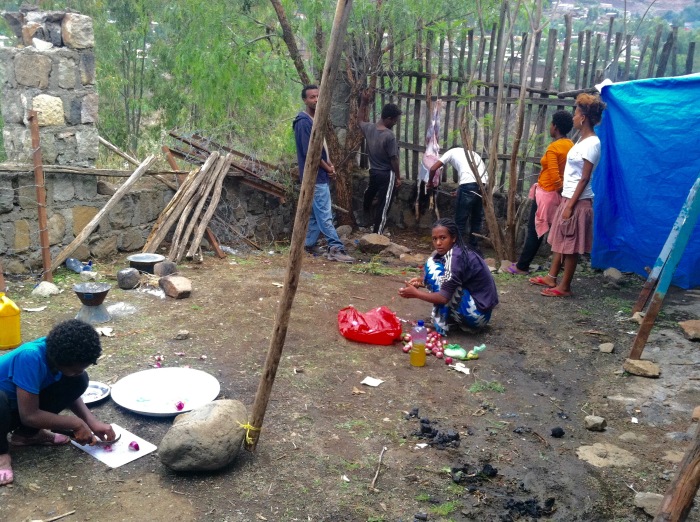
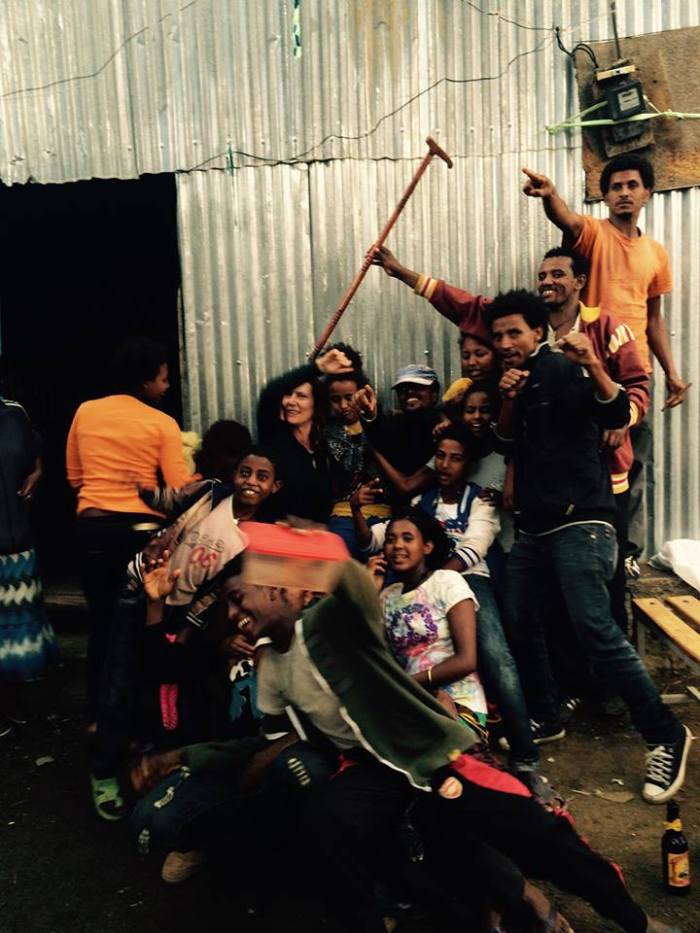
Lalibela deals with trash by throwing it on the ground or burning it. When cleaning up our space, someone tried to start burning plastic. Before we had access to our water source I bought some bottled water and asked them to reuse the bottles, but then noticed the kids mostly, tearing them up and discarded them rather dramatically on the ground. The next day there were no water bottles to fill, so I decided to do an educational session on plastic. I shared with the group when plastic was developed and why, what is happening now because if it, and the effects it has when burned. Since I started my traveling last September, I have been using the same small filter made by Sawyer which can filter up to 100,000 gallons of water if cleaned periodically simply, with water. They seemed to appreciate the talk. Afterwards, we used large reusable jugs to gather water for drinking and washing.
The picture below is Admas’s bathroom. If you step too far off to one side you might fall off the mountain.
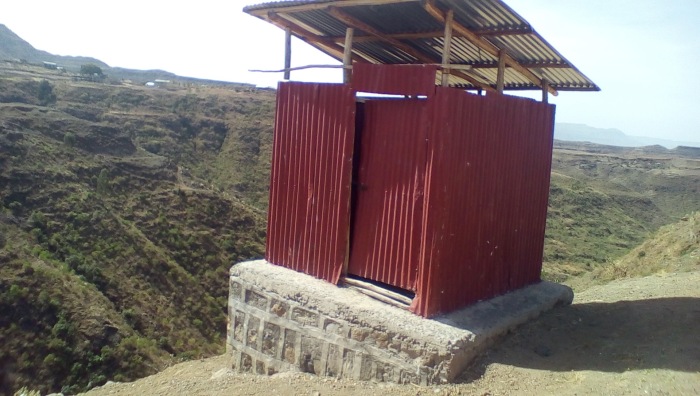
After a couple of weeks of improvising the wedding scene which was quite glorious in its joyfulness but always used small girls as the bride, I decided to do a workshop on the topic. There was also a scene between an older man and a young girl which personally looked rather abusive. I used the painting on the wall of female genitalia that Admas has, to discuss what happens when a small girl gets pregnant and is in labor for too long. Obstetric fistula is a condition which may occur. Recent studies indicate there are between 36,000 and 39,000 women living with fistula in Ethiopia, and over 3,000 additional new cases occur each year.
I asked them to think about this issue personally and how it may affect them as it is a part of their culture. Hailey Daniel, the theater chairman asked the performers to break up into two groups to discuss the issue and create theatrical scenes. Each group created a play and showed them to each other. Hailey combined the scenes and stories to create our play. After discussing the narrative and its dramatic capacity the group performed an extraordinary play about the topic set in the countryside in which a young girl dies at the end and the father (played by Hailey) gives a remorseful monologue about marrying his daughter and the future of Ethiopia. Hailey is the elder of the group. He has one artificial leg from being a soldier for Ethiopia. In this picture below he is sitting in the back wearing a maroon and yellow jacket.
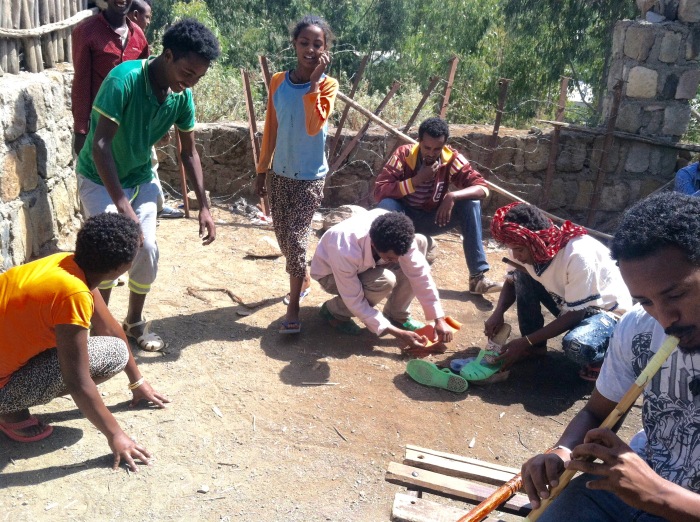
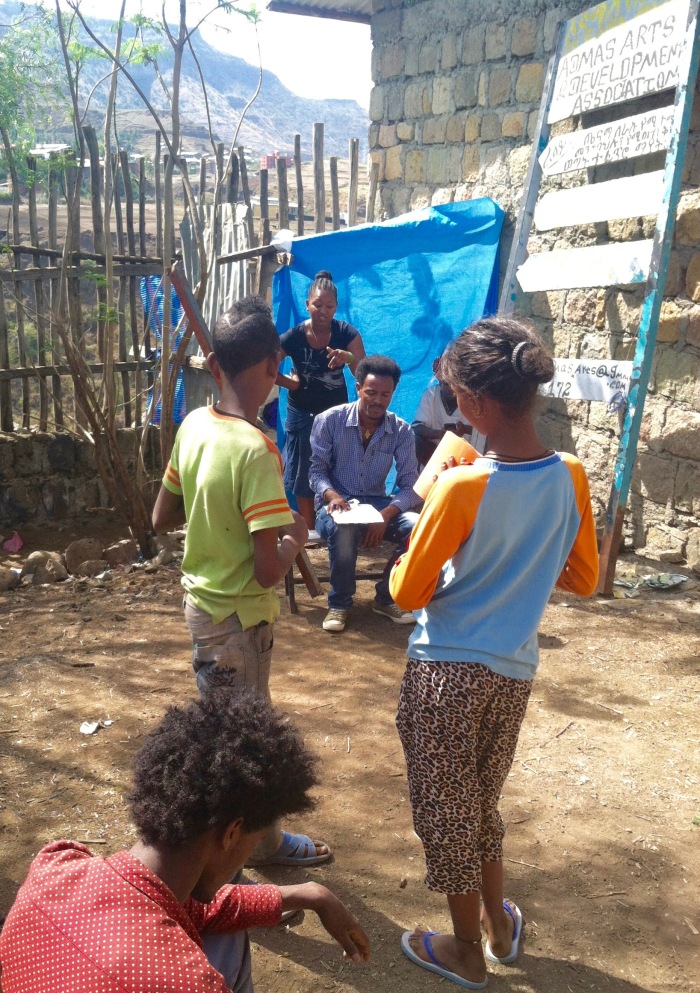 Malcomo, the Music Chairman sitting in this picture, also helped with directing the play.
Malcomo, the Music Chairman sitting in this picture, also helped with directing the play.
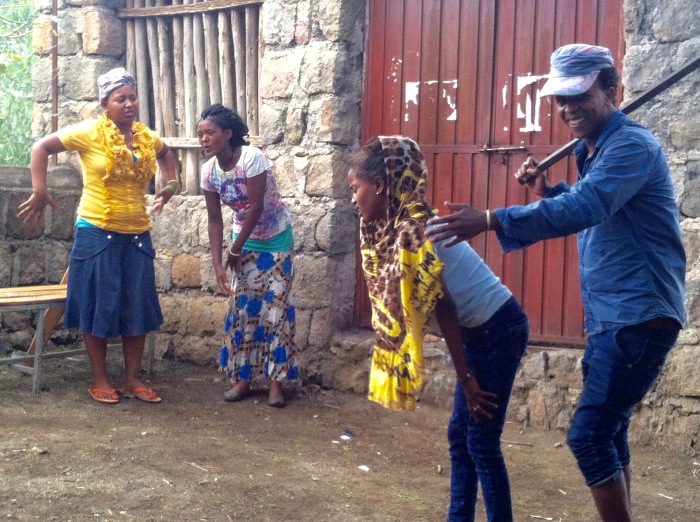
Nasanet (in the yellow shirt) plays the mother in the play and also ‘Ethiopia’ in the history section of the show. Meseret plays the young student who gets married and pregnant. Both gave remarkable performances.
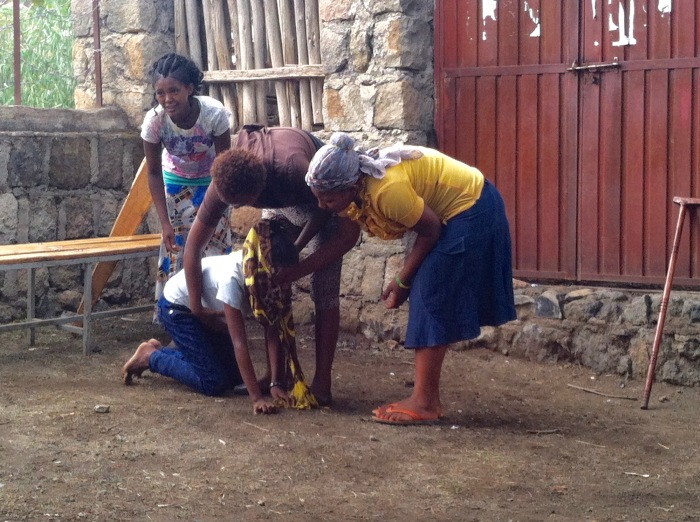
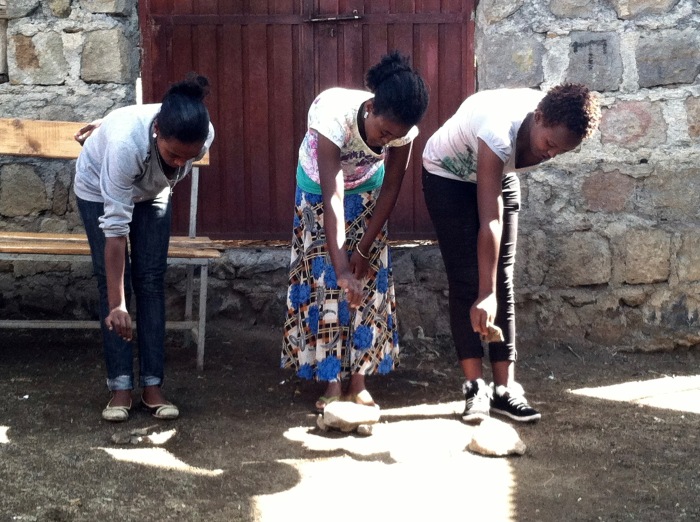
Rather amazingly, thanks to the extraordinary leaders of the group, we managed to overcome our challenges. Hailey, as well as Mareg Asmro did most of the negotiating, but there were times when all 4 chairmen and I would attend government meetings. The biggest one was with the Mayor of Lalibela. Staff at the UNESCO building said at first that, it would not work for us to perform in their space. Up to week eight we were not sure if we had secured the space. Finally, we were told, we would have the space to work in for 4 days. On the first day, they would only let us bring our equipment to the location to be stored. On the second day, we had 1 ½ hours in the space. Day 3 and 4 were performance days. The way the group shifted their work to fit the stage without much rehearsal was remarkable.
Members contributed their own props and costumes for the play which the head of the UNESCO building said looked like what they carry in their museum; hand-made and used baskets, traditional injera makers, gourd cups, animal skins and hand-made farming equipment. Thankfully, the Office of Culture and Tourism softened up and donated their costumes to the dancers for the show. WHEE paid for the dancer’s hair to get done. While in Addis renewing my visa, I bought material for the circus costumes. They wore the traditional Sora (Lalibela traditional dance) green, and beige; the color of the stone churches. A circus student’s father sewed up their custom fitted costumes beautifully. Everyone looked fantastic.
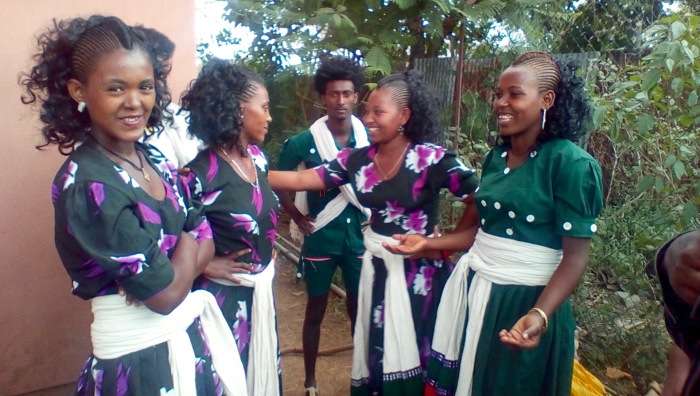
The stage at the UNESCO Cultural Center, built for movies and meetings is very thin and the fancy electric movie screen is stuck down as the electrical system is broken, but we were able to open up the large doors behind where the musicians sat in the natural light. We had some indoor floodlight inside the building when the managers were generous enough to turn them on for us. This complimented the circus performers who took their pyramids up into the tall ceiling, and the dancers and actors worked themselves on the long thin stage. The sound inside the building is very live so any speaking or singing inside was audible and the acoustic music sounded fine.

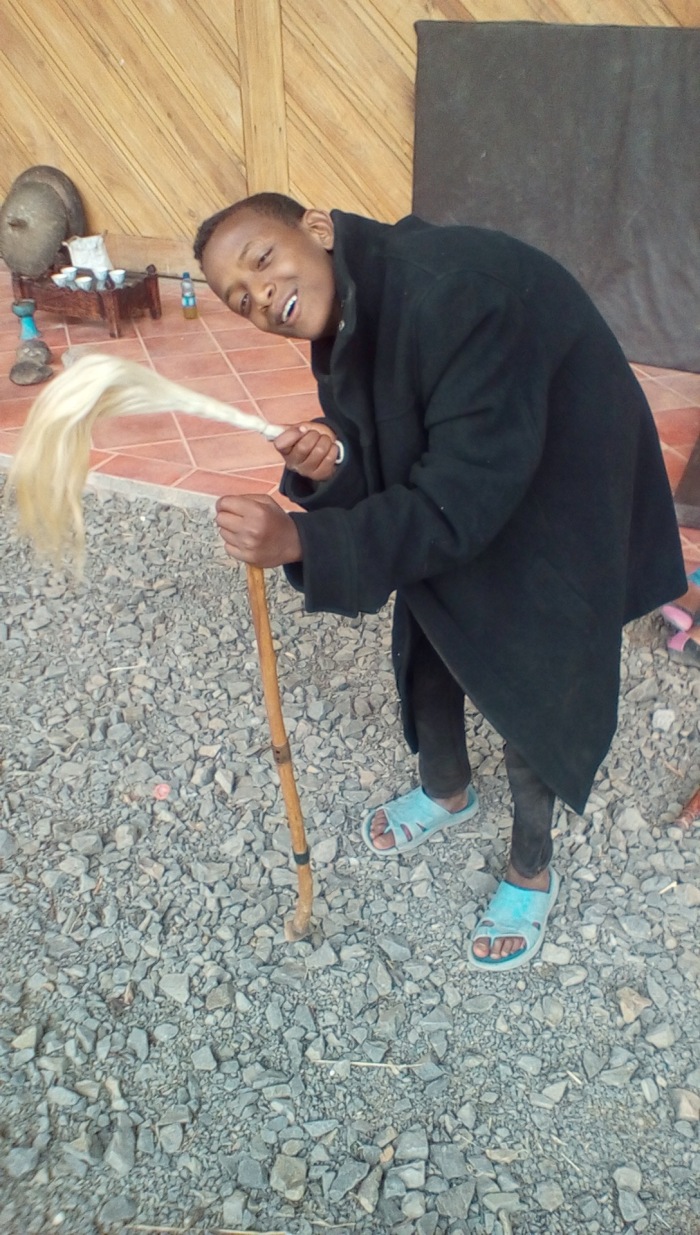
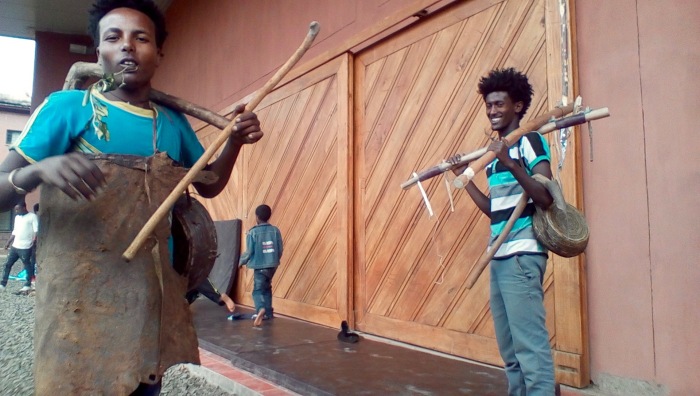
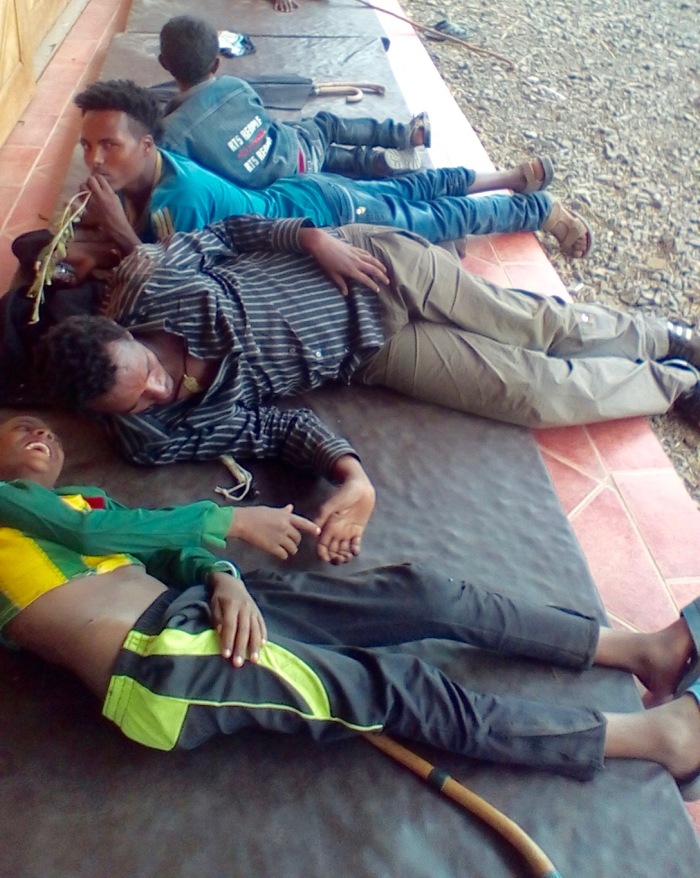
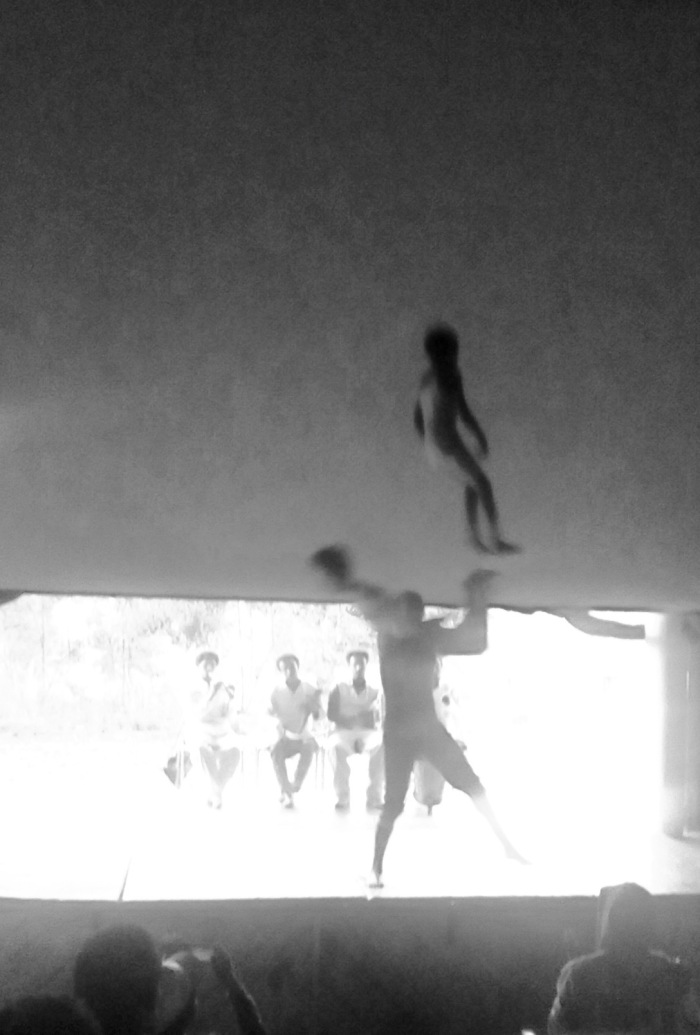
We learned so much working together, everyone is now asking about our next steps. We have been offered a relatively high fee to rent the UNESCO space. Investment is required now until ticket sales can cover expenses and salaries. Letty Chirawa, the Representative to Ethiopia, Africa Union (AU) and Economic Commission for Africa (ECA) UN Women recommends we market the play about early marriage to regional and national government offices to perform at conferences for awareness and discussion. I would like to work with a female Ethiopian Director to do this. All donations are tax deductible and welcome to the non-profit organization Wheelbarrow Productions, Inc. contact@wheelbarrowproductions.org





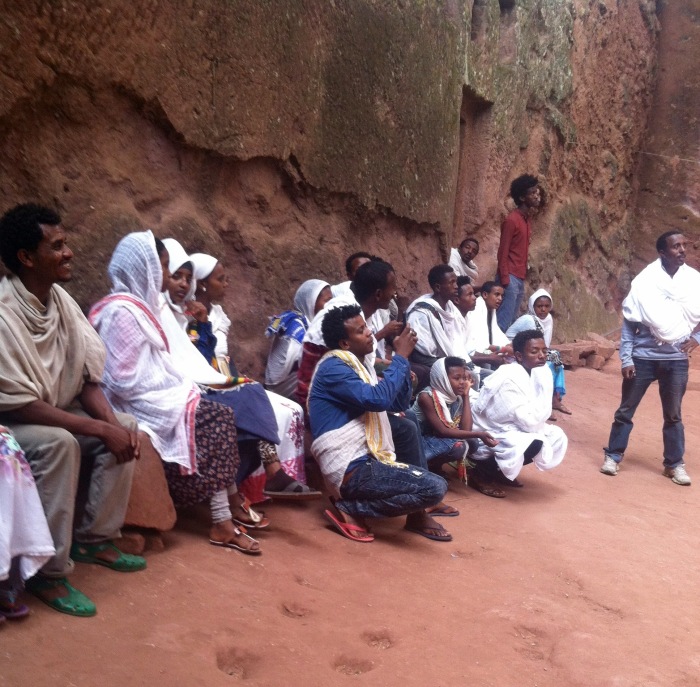 Part of the cast listening to the Deacon Guide in Bet Emmanuel Church.
Part of the cast listening to the Deacon Guide in Bet Emmanuel Church.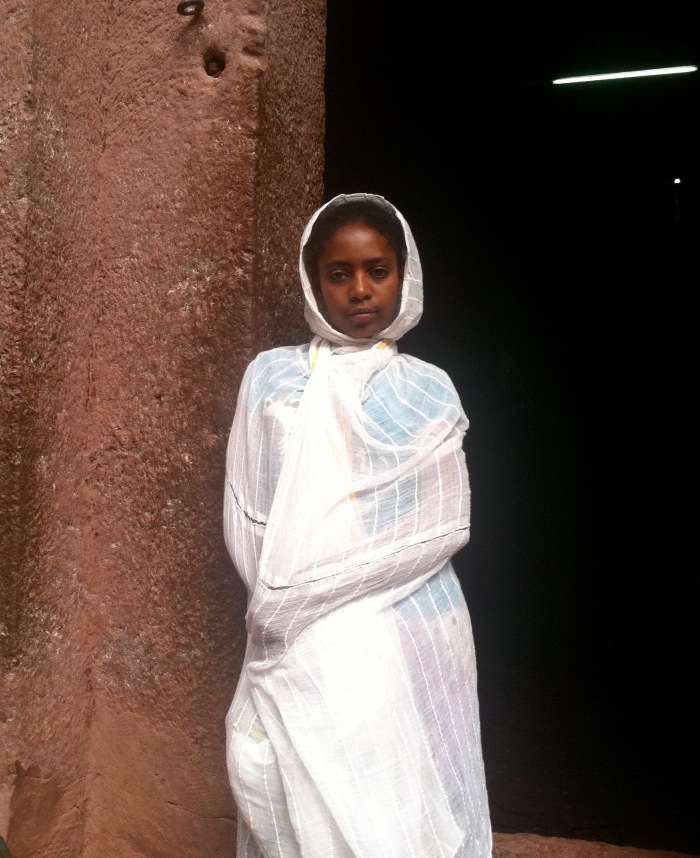 Mulye
Mulye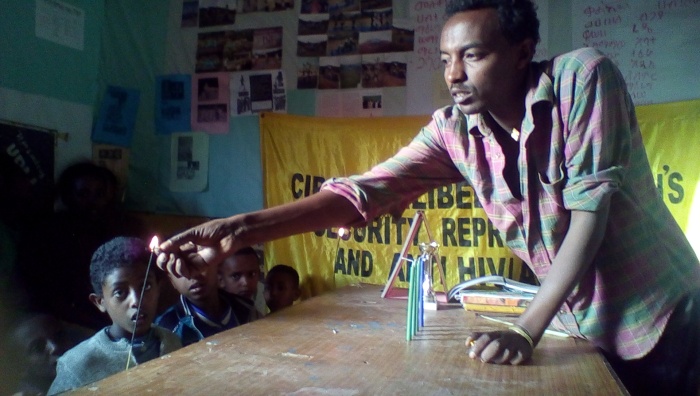
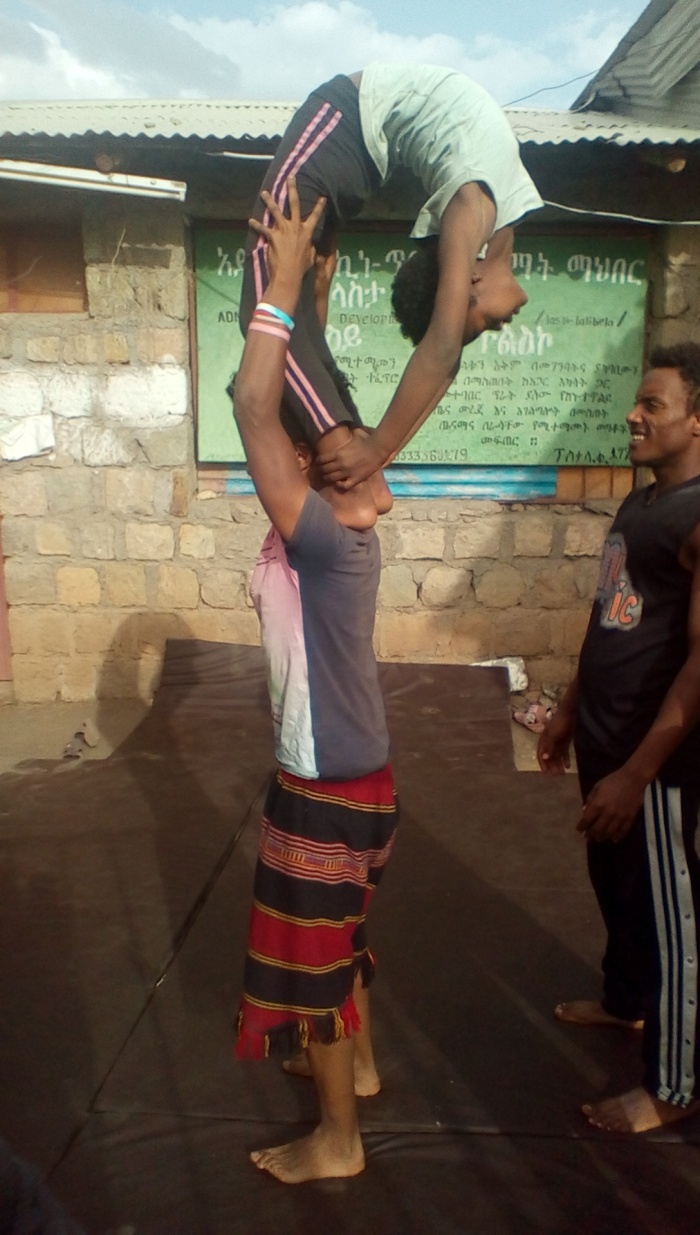 Circus student and performer, Marta works on her bridge balance on Mesele’s shoulders at the Admas space where we rehearse.
Circus student and performer, Marta works on her bridge balance on Mesele’s shoulders at the Admas space where we rehearse. Marta’s triple high at our practice at the Admas space. We’ve since bought material to create shade for the high space we need. Artistic Director, Mareg is with his arm up on the side. He is also working as a base for the Circus.
Marta’s triple high at our practice at the Admas space. We’ve since bought material to create shade for the high space we need. Artistic Director, Mareg is with his arm up on the side. He is also working as a base for the Circus. Marta and Mulye practicing in the low ceiling circus practice space on a off day. The picture was taken by a fellow Circus member.
Marta and Mulye practicing in the low ceiling circus practice space on a off day. The picture was taken by a fellow Circus member. Admas Program Officer, Tilahun is showing us the horse hairs we bought for Fukado, the Masinko player. Fukado has to replace his hair strings every couple of weeks. Tilahun is also a very good dancer and participates in rehearsal when he is able. Both Mareg’s and Tilahun’s translation and leadership is invaluable.
Admas Program Officer, Tilahun is showing us the horse hairs we bought for Fukado, the Masinko player. Fukado has to replace his hair strings every couple of weeks. Tilahun is also a very good dancer and participates in rehearsal when he is able. Both Mareg’s and Tilahun’s translation and leadership is invaluable.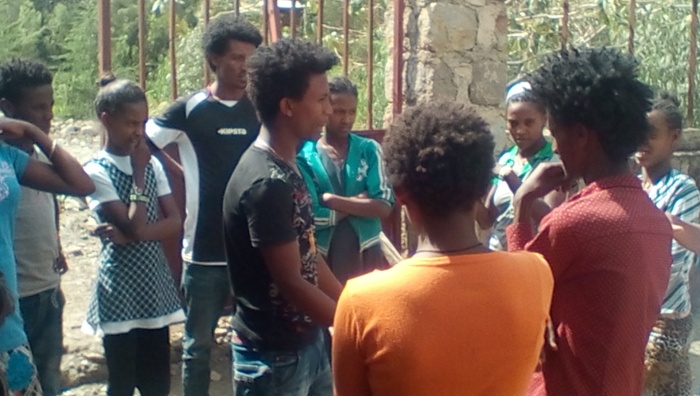 Mesele, a lead Circus performer coaches the members.
Mesele, a lead Circus performer coaches the members.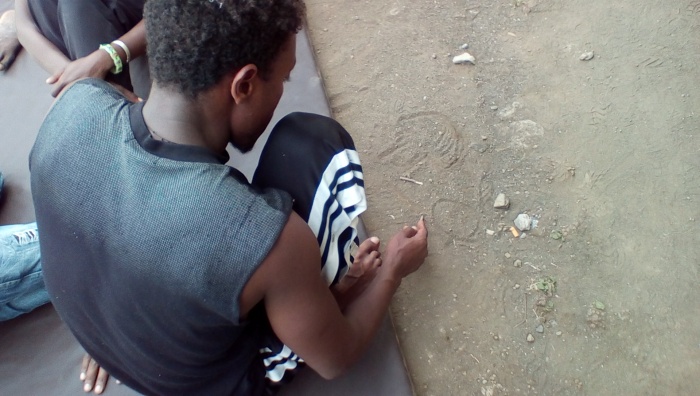 Gashaw, the Director of Circus Lalibela plans a pyramid to represent a church.
Gashaw, the Director of Circus Lalibela plans a pyramid to represent a church.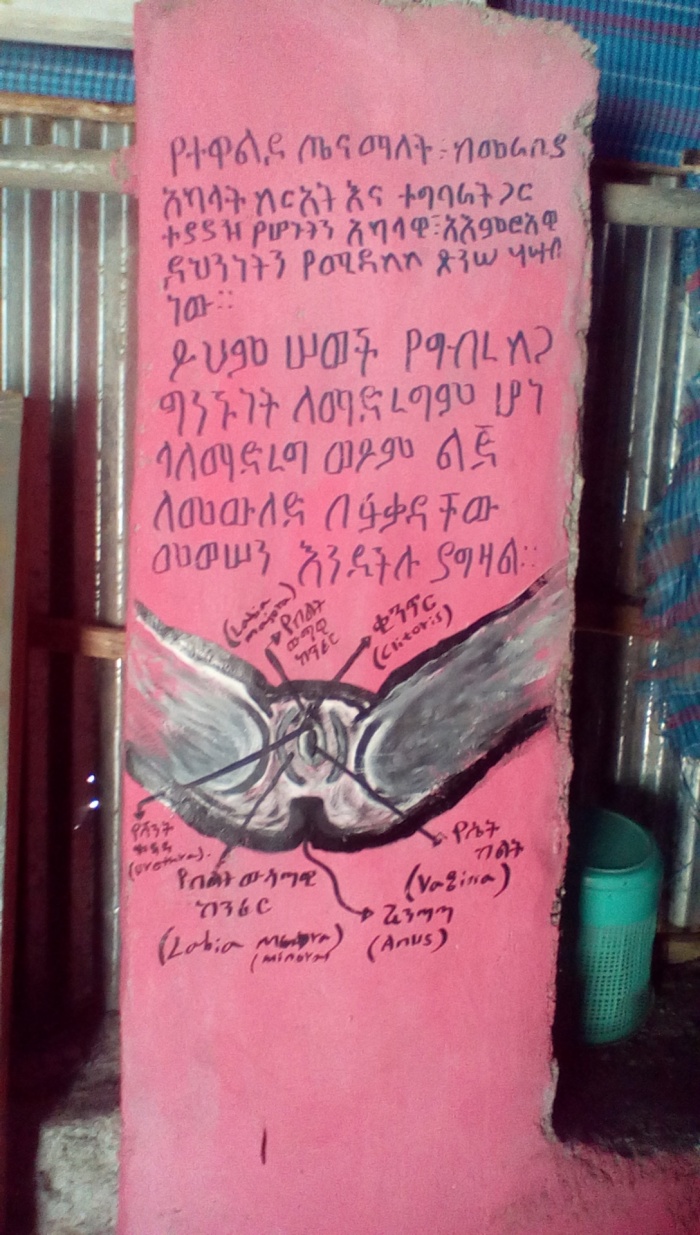 Education at Admas teaches the effects of early marriage on young girls.
Education at Admas teaches the effects of early marriage on young girls. 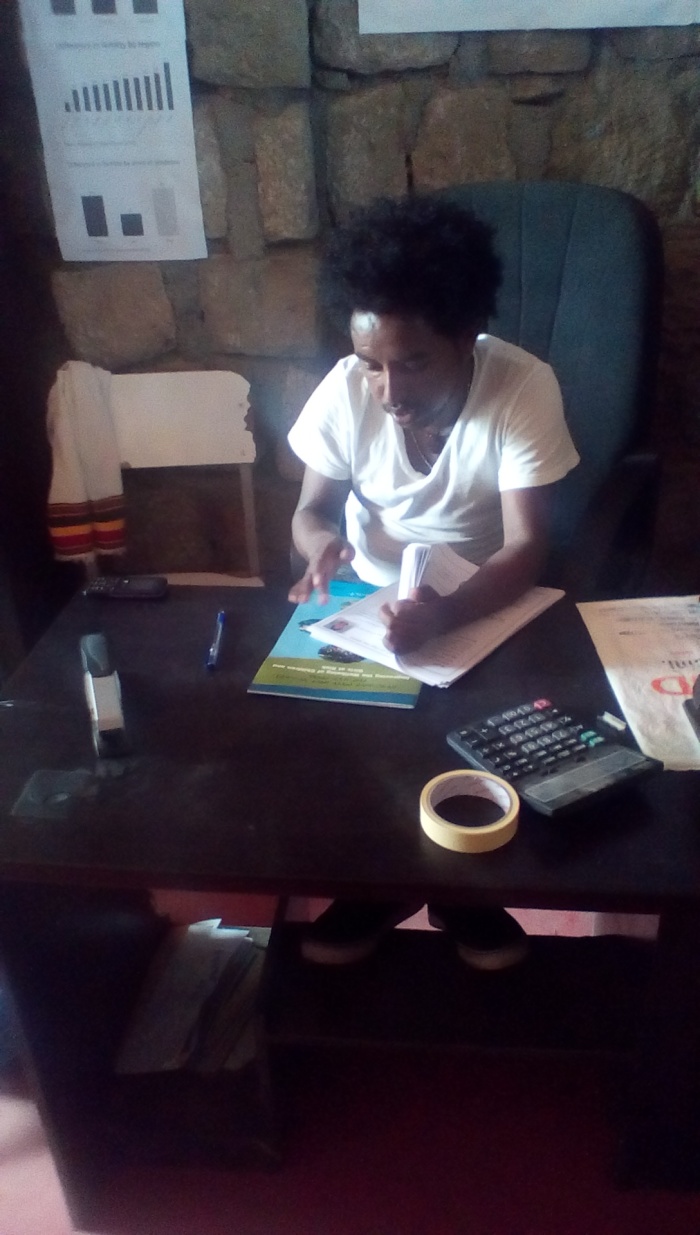 Tilahun at his desk reviewing the member contracts. Altogether the Lalibela Circus and Cultural Show is employing 29 people. (Actually 30, if you include the security guard).
Tilahun at his desk reviewing the member contracts. Altogether the Lalibela Circus and Cultural Show is employing 29 people. (Actually 30, if you include the security guard).